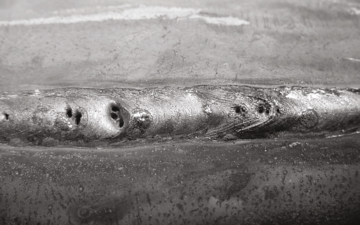Comprehensive Overview: What is Porosity in Welding and How to Prevent It
Comprehensive Overview: What is Porosity in Welding and How to Prevent It
Blog Article
Understanding Porosity in Welding: Checking Out Causes, Results, and Avoidance Techniques
Porosity in welding is a persistent difficulty that can considerably impact the quality and integrity of welds. As specialists in the welding market are cognizant, comprehending the causes, results, and avoidance techniques related to porosity is crucial for attaining durable and reputable welds. By delving right into the origin of porosity, analyzing its damaging effects on weld top quality, and checking out effective avoidance techniques, welders can enhance their expertise and skills to generate high-grade welds regularly. The intricate interaction of elements adding to porosity needs a comprehensive understanding and an aggressive method to ensure successful welding outcomes.
Typical Root Causes Of Porosity
Porosity in welding is mainly triggered by a combination of variables such as contamination, inappropriate shielding, and inadequate gas coverage during the welding procedure. Contamination, in the kind of dust, oil, or rust on the welding surface area, develops gas pockets when warmed, bring about porosity in the weld. Inappropriate securing happens when the protecting gas, typically utilized in processes like MIG and TIG welding, is incapable to totally shield the liquified weld pool from reacting with the bordering air, leading to gas entrapment and subsequent porosity. In addition, poor gas protection, usually because of inaccurate flow prices or nozzle positioning, can leave parts of the weld vulnerable, allowing porosity to create. These variables jointly add to the development of spaces within the weld, compromising its integrity and possibly causing architectural problems. Understanding and dealing with these common causes are crucial actions in stopping porosity and ensuring the high quality and strength of bonded joints.
Effects on Weld High Quality
The presence of porosity in a weld can considerably endanger the overall top quality and stability of the welded joint. Porosity within a weld creates gaps or cavities that compromise the structure, making it extra at risk to cracking, corrosion, and mechanical failure.
Moreover, porosity can impede the performance of non-destructive testing (NDT) strategies, making it testing to discover various other defects or interruptions within the weld. This can result in substantial security issues, especially in critical applications where the architectural honesty of the bonded components is paramount.

Avoidance Techniques Summary
Given the harmful effect of porosity on weld high quality, reliable prevention techniques are critical to preserving the structural integrity of bonded joints. Furthermore, selecting the suitable welding parameters, such as voltage, current, and travel rate, can help lessen the threat of porosity formation. By integrating these prevention techniques into welding click over here now practices, the event of porosity can be substantially reduced, leading to more powerful and click for more extra trusted welded joints.
Value of Proper Shielding
Appropriate protecting in welding plays a crucial role in preventing climatic contamination and ensuring the integrity of welded joints. Protecting gases, such as argon, helium, or a mixture of both, are generally utilized to protect the weld pool from reacting with elements in the air like oxygen and nitrogen. When these responsive elements enter into call with the warm weld swimming pool, they can trigger porosity, causing weak welds with lowered mechanical residential properties.

Insufficient shielding can cause different issues like porosity, spatter, and oxidation, endangering the architectural stability of the welded joint. For that reason, adhering to appropriate securing techniques is vital to generate high-quality welds with minimal issues and make certain the long life and dependability of the welded elements (What is Porosity).
Tracking and Control Methods
Exactly how can welders effectively monitor and control the welding process to make certain optimal outcomes and prevent issues like porosity? One trick method is via making use of sophisticated tracking technologies. These can include real-time monitoring systems that supply responses on criteria such as voltage, present, take a trip speed, and gas flow rates. By continuously keeping track of these variables, welders can identify inconsistencies from the perfect problems and make immediate adjustments to stop porosity formation.

Furthermore, executing proper training programs for welders is important for monitoring and controlling the welding procedure successfully. What is Porosity. Educating welders on the relevance of keeping regular parameters, such as appropriate gas protecting and take a trip speed, can help avoid porosity concerns. Normal assessments and certifications can also ensure that welders are proficient in surveillance and managing welding processes
Additionally, using automated welding systems can enhance monitoring and control capabilities. These systems can precisely manage welding criteria, minimizing the possibility of human mistake and making sure constant weld quality. By incorporating innovative monitoring innovations, training programs, and automated systems, welders can effectively check and regulate the welding process to minimize porosity problems and achieve top quality welds.
Conclusion

Report this page